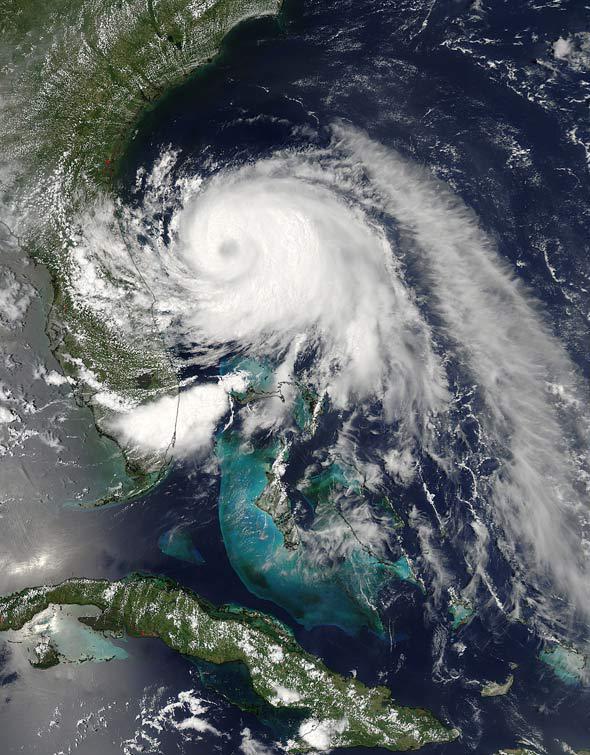Hurricane Arthur is currently slamming the East Coast of the United States. Having lived through a number of such tempestuous events, I hope everyone affected is staying safe.
If you’ve never been in one, the sheer violence of a hurricane is difficult to imagine. The lashing winds, the sideways rain, the storm surge causing flooding and misery … and yet, despite all that, from a distance hurricanes are unutterably beautiful.
When seen from space, the might and power of air, water, convection, and the Coriolis effect become this:

Photo by NASA Goddard MODIS Rapid Response Team
This image was taken with NASA’s Aqua Earth-observing satellite on the afternoon of July 2, 2014, when Arthur was still a tropical storm. It surged in strength over the next few hours and became a Category 2 hurricane (meaning it had sustained winds of 154–177 km/h, or 96–100 mph) on July 3, making landfall last night. It’s the first hurricane of the official 2014 season, and it’s packing quite a punch. The current track has it skirting up the East Coast, passing right over Nova Scotia and Newfoundland next week.

Photo by NASA
I’m fascinated by large weather events, pictures from space, and the science behind them both. Images like these are a trifecta for me, but they are far more than just eye candy. Because of science, we can understand potentially deadly phenomena and make them considerably less so. We can predict the formation, growth, track, and damage done by cyclones, giving us considerable foresight in how to manage their effects. We can build better structures, warn people, get them out of the way.
The science is good and getting even better, but of course when people are thrown into the mix, the implementation of that science has a less-than-stellar track record. This is one of the many, many reasons I advocate for better understanding of science. It saves lives, it saves money, it saves our future.
And it’s also sometimes very, very beautiful.